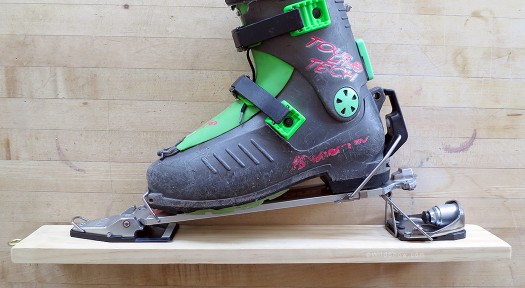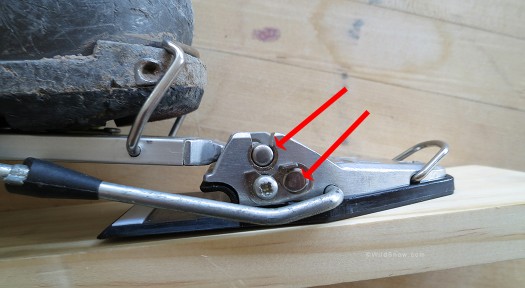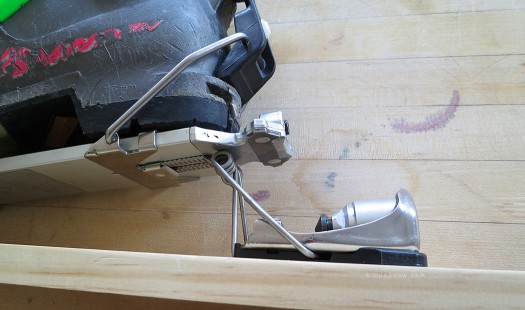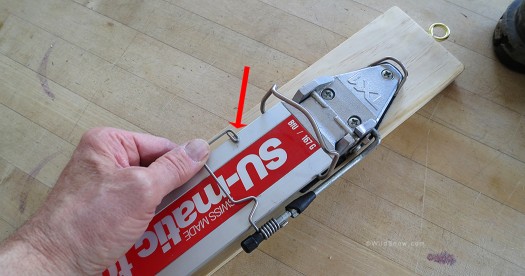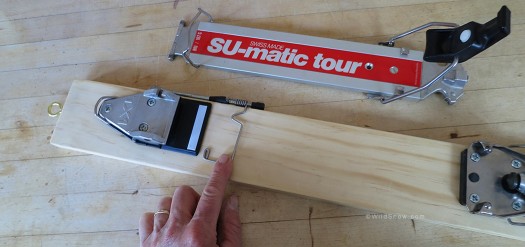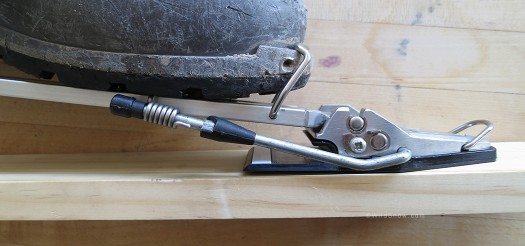Recent backcountry (sidecountry!) popularity aside, when you consider the run AT bindings have had over the past five decades it’s obvious that backcountry alpine ski touring has been quite the viable sport for decades. Thanks goes to binding collector Matt C. for trading me this clean looking Su-matic plate binding from the early 1980s. Thus far I’ve not obtained a narrower manufacturing and sales date; if anyone has the info please leave a comment (Europeans, please speak up!). Nice addition to the WildSnow Binding Museum!
Su-matic Tour has your typical Swiss attention to detail and manufacturing quality. Cast aluminum toe unit is austere and functional, with the “TX1” moniker in raised characters. I’m assuming this is just your typical European trend to name products with multiple terms, but who knows? Binding frame consists of a hollow aluminum plate with cast alu pieces inserted in both ends. Boot is held by typical toe wire and pivot-latch at the rear. Boot length adjustment is done by loosening screw and sliding steel bracket fore and aft. A second screw hole is provided for boots too short for the adjustment range. Nicely done iteration of the classic plate binding concept still used in the ski touring industry by Fritschi.
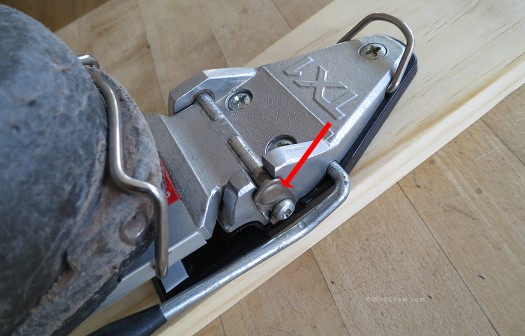
In touring mode, an axle on the front end of the plate is slotted into the toe unit, as shown. Arrow indicates a small rotating cover that caps the end of the slot to prevent the axle from sliding out.
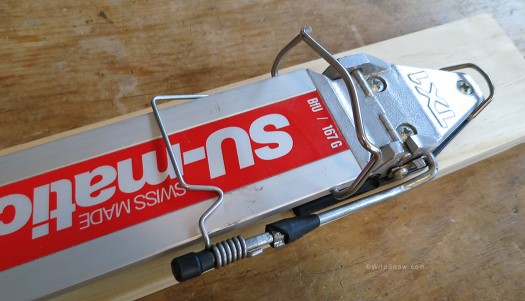
This funky ski brake also acts as a spring loaded arm that when attached to plate in touring mode provides a return spring while walking. It could be easily eliminated while mounting the binding. In the 1970s, European touring binding makers all thought you had to include some kind of return spring mechanism that kept the tail of your ski held up to your heel while completing strides or side stepping. The first binding to not have a return spring was the American invented and made Ramer which was first retailed in 1976.
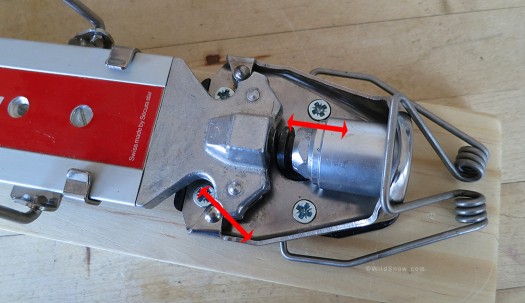
Release mechanism. For alpine mode you remove the front of plate from the toe unit and insert it so it free floats. Thus, when the front of the plate moves to the side it camps out at the rear which in turn pushes the black plunger in so release can happen.
More about the safety release of Su-Matic Tour: In the late 1960s and 1970s a few companies attempted to make ski bindings that worked off a plate concept with the release springs in the rear, most notably Spademan (which is the alpine binding Bill Briggs used during his first ski descent of the Grand Teton in 1971). Having release mechanism in the rear allowed the toe of the boot to move freely to the side during release and was thus in theory safer. But retention has always been a problem with these types of bindings due to their extreme sensitivity to normal skiing forces, as well as inability to absorb anomalous variations such as snow packing under the boot while entering the binding.
Su-Matic is configured for downhill skiing by placing rear of plate in the heel unit, then sliding the plate into position as you insert the front of the plate in a slot under the rear of the toe unit. As you do this, a small spring-loaded piston at the rear provides release tension. It’s an ingenious system, though we suspect it did not provide much elasticity and would have been prone to pre-release unless run at fairly high release tension.
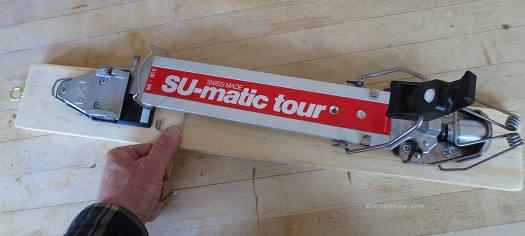
Brake retainer clip with plate being installed. If the binding releases, the plate pops out which in turn lets the brake deploy.
Weight 35 ounces, 944 grams per binding.
Donated to WildSnow collection by Matt C.
WildSnow.com publisher emeritus and founder Lou (Louis Dawson) has a 50+ years career in climbing, backcountry skiing and ski mountaineering. He was the first person in history to ski down all 54 Colorado 14,000-foot peaks, has authored numerous books about about backcountry skiing, and has skied from the summit of Denali in Alaska, North America’s highest mountain.


